Project Ladybird
The New York Times article below, dated September 15, 1953, documents the probable inspiration for Project Ladybird -- an official visit by Air Research and Development Command (ARDC) commander Lt. General Donald Putt to Avro's Malton plant, where he met with Dr O. M. Solandt, from the Canadian Defense Research Board, and was impressed by the "Project Y" "spade-shaped" VTOL mockup.
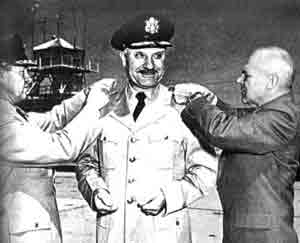
Lt Gen L C Craigie (L) and James Doolittle pin Lt Gen Donald Putt with his second star

Immediately after Putt's visit, Project Blue Book issued its Status Report Number 12, which contained a valuable capsule history of Frost's attempts to sell the US on the saucer concept as early as 1950.
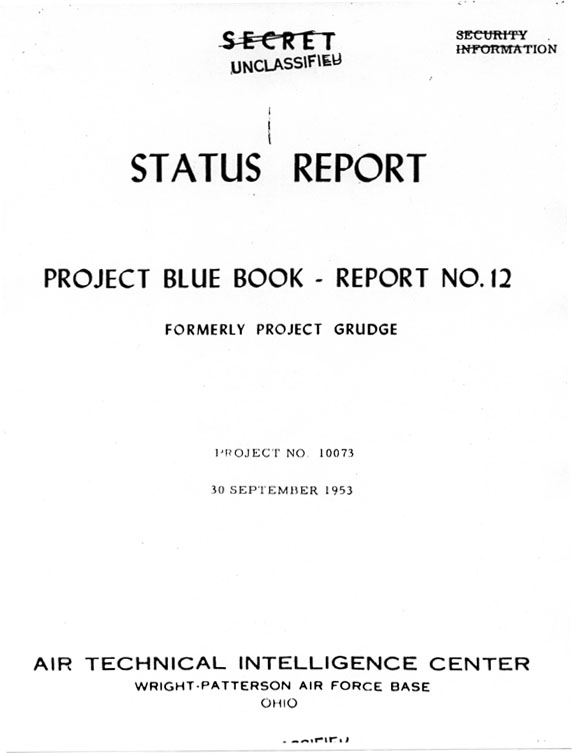
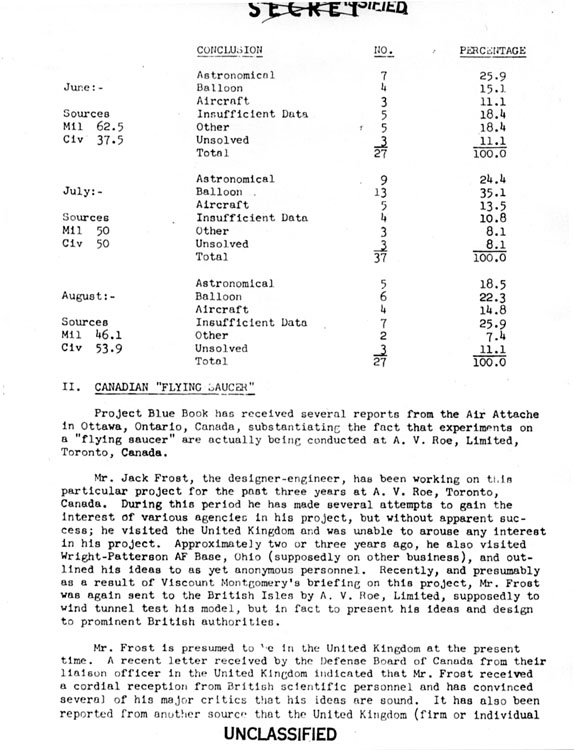
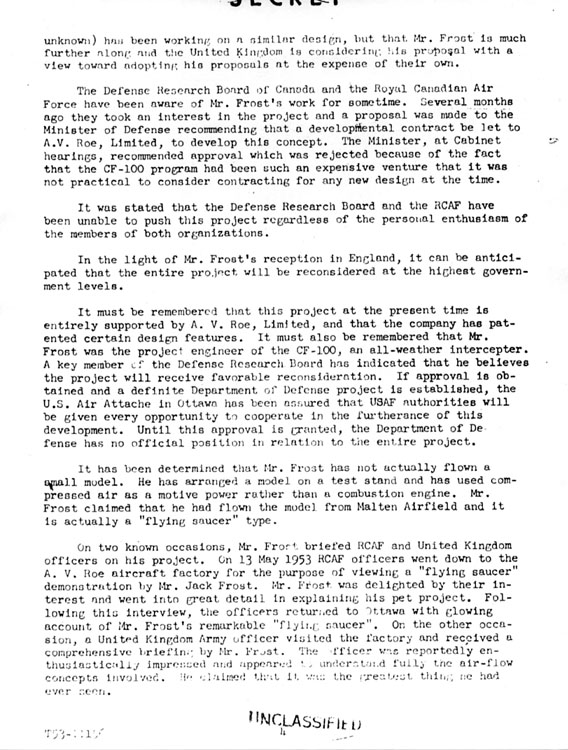
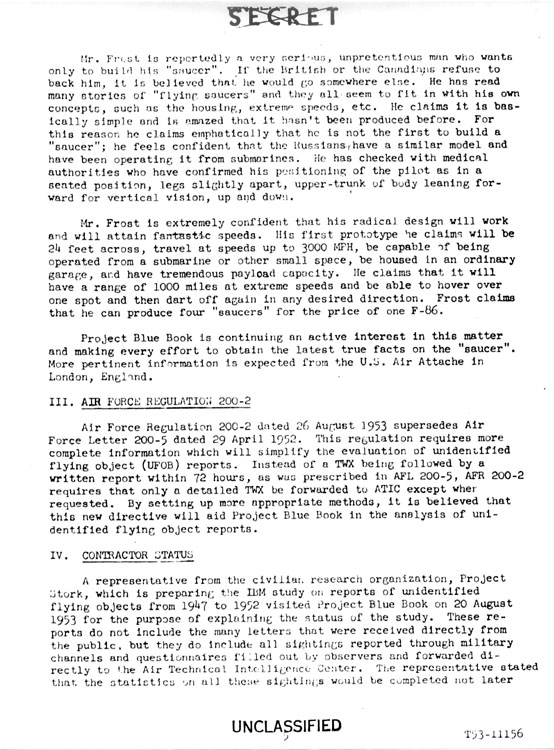
Frost's fears about the possibility that the Soviets were launching similar saucers from submarines were gaining credibility -- or at least they were reaching a wider audience. This would have serious repercussions later on.
In January 1954, Avro and the Canadian Defense Research Board approached the US Air Force with an invitation to formally consider the Avro "Y" and "Y2" designs as a possible project. Avro made a proposal to the USAF that April regarding the new "Y2" saucer, which was a true disc-shaped vehicle. On May 20, the CIA's Office of Scientific Intelligence issued a request for a determination as to which of the OSI divisions would be responsible for coordinating intelligence on foreign counterparts of the Avro saucer.
On August 13, 1954, eleven months after Putt's visit, ARDC issued Technical Requirement 3, a requirement for a project development plan for the Avro "Y2" saucer. The project, which was given priority 1A status, equal to the H-bomb, the later U-2, and similar high-urgency programs, was to be called "Ladybird." Classification level of the project was "Secret."
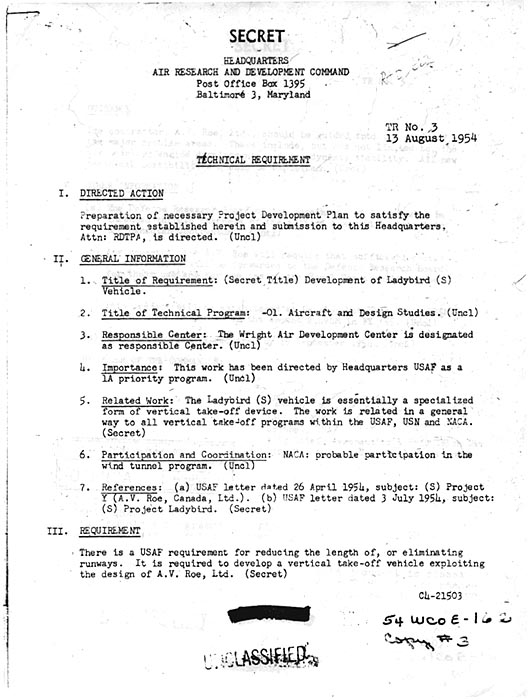
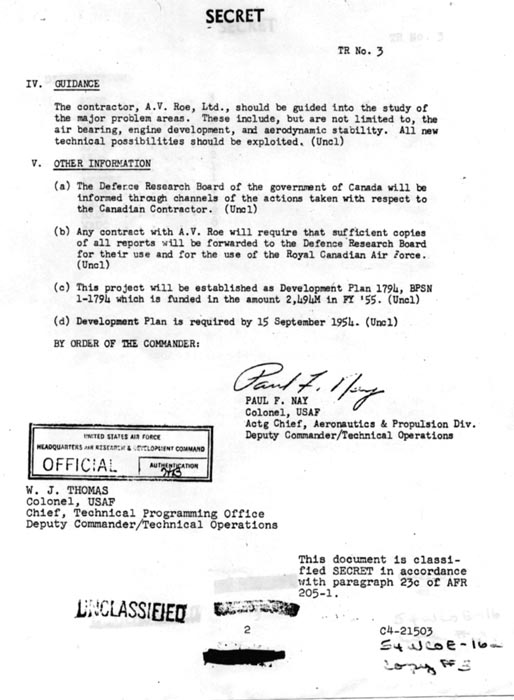
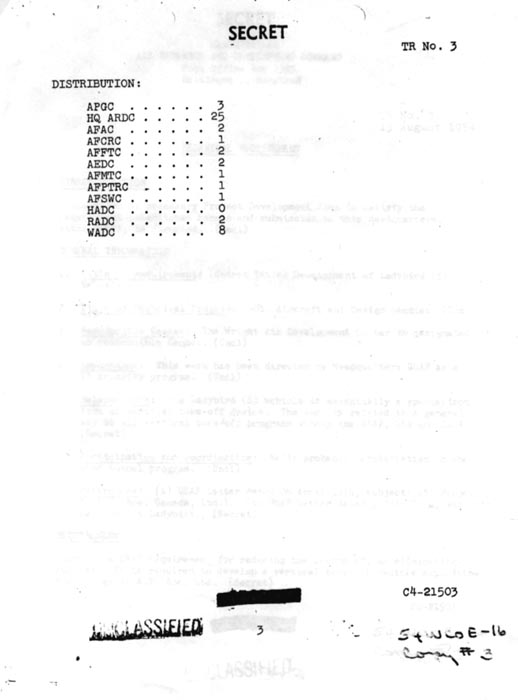
One version of Y2 is shown in the illustration below, from SPG report TR 25, which dates from about the time of the initiation of the USAF Ladybird project. This iteration used six small Armstrong Siddeley Viper 8 turbojets as gas generators to power a pair of centrifugal impellers surrounding the cockpit. Diameter was about 29 feet. Empty weight was about 21,000 pounds, loaded weight was 29,000 lb, and total engine thrust was estimated at over 43,000 lb, giving the craft tremendous performance.
Maximum speed was estimated to exceed Mach 3.48, about 2,400 mph, with a ceiling of over 80,000 ft -- comparable to the performance of the Lockheed A-12 "Archangel," which flew about eight years later.
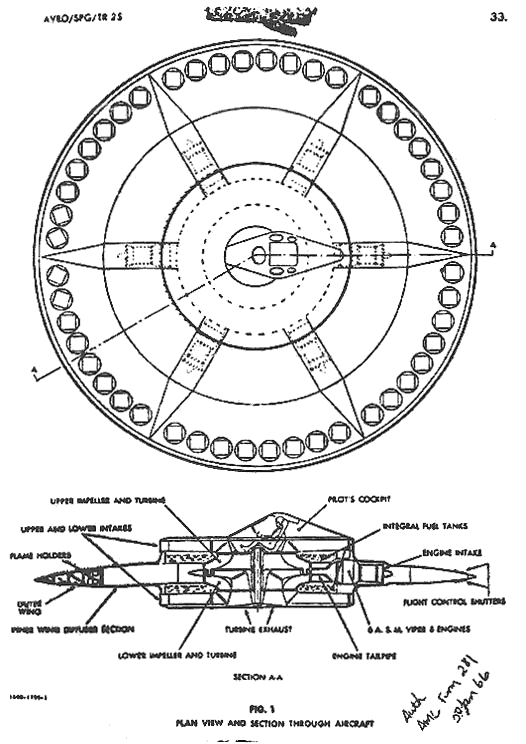
On September 15, a year to the day after Putt's visit to Avro, ARDC issued a twelve-page Research and Development Project Plan for the Ladybird vehicle, outlining the project's history, schedule, basic technical details, and financials. Project Engineer was William Lamar, chief of the Wright Air Development Center Bombardment Branch New Development section, who was simultaneously initiating development of what would become the U-2 program.
Funding estimates were laid out for fiscal years 1955-59, and no firm date for a first flight was scheduled due to the many unsolved technical questions surrounding the vehicle's design. Funding was programmed as follows:
1955 $2.5 million
1956 $6.02 million
1957 $12.03 million
1958 $6.03 million
1959 $2.03 million

See: Ladybird R&D Project Plan (12 pages)
On October 10, 1954 an ARDC Project Card for Ladybird was sent to the Research and Development Board, reiterating the basic technical details of the Avro design, providing a list of comparable VTOL projects, and describing the engineering problems requiring solution before the concept could be validated.
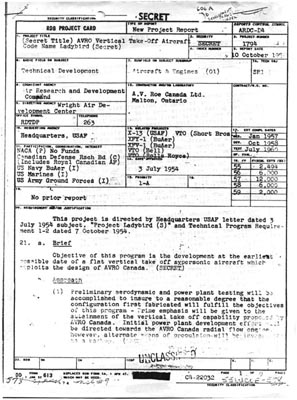
See: Ladybird RDB Project Card (9 pages)
While ARDC may have been sold on the Avro concepts (or at least Putt may have been), it would be easy to assume that some elements would have been less than enthusiastic about the practicality of a 2,400 mph, vertical takeoff flying saucer. Indications of controversy may be hinted at by the fact that Air Force Scientific Advisory Board held joint meetings of its Aerospace Vehicles and Propulsion Panels in November to consider the Y2/Ladybird concept.
The December issue of Air Intelligence Digest contained an alarmist article about possible Soviet counterparts of the Avro vehicle and showed illustrations of the Ladybird design, without, however, using the Ladybird name.
On January 17, 1955, ARDC cancelled the Ladybird/TR 3 requirement and the Ladybird name ceased to be used to refer to the Avro saucer project. The project continued to be pursued, but at a much lower level of emphasis.
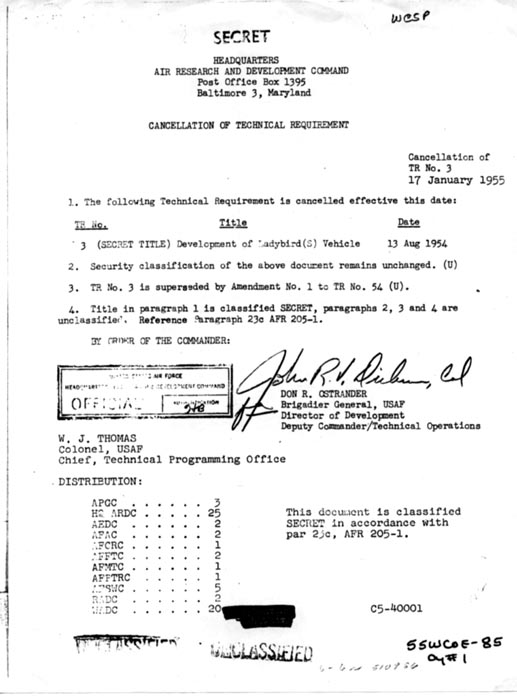
On February 16, Wright Air Development Center and the Air Technical Intelligence Center issued a joint report on what was now called Project 9961, Silver Bug.
See: Silver Bug